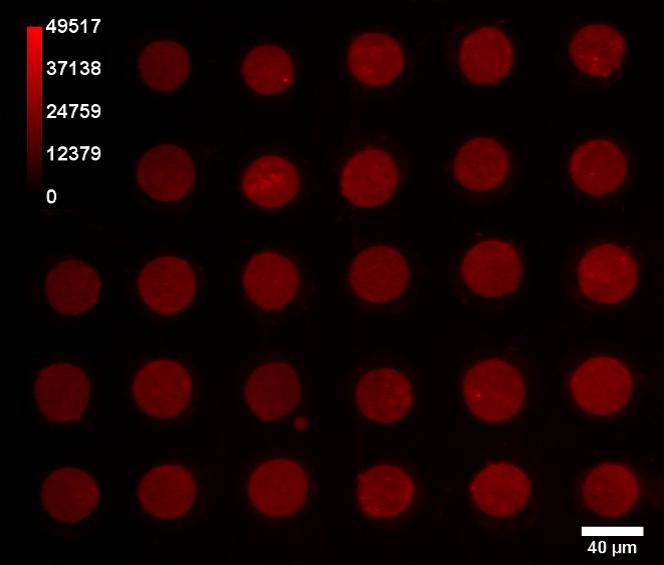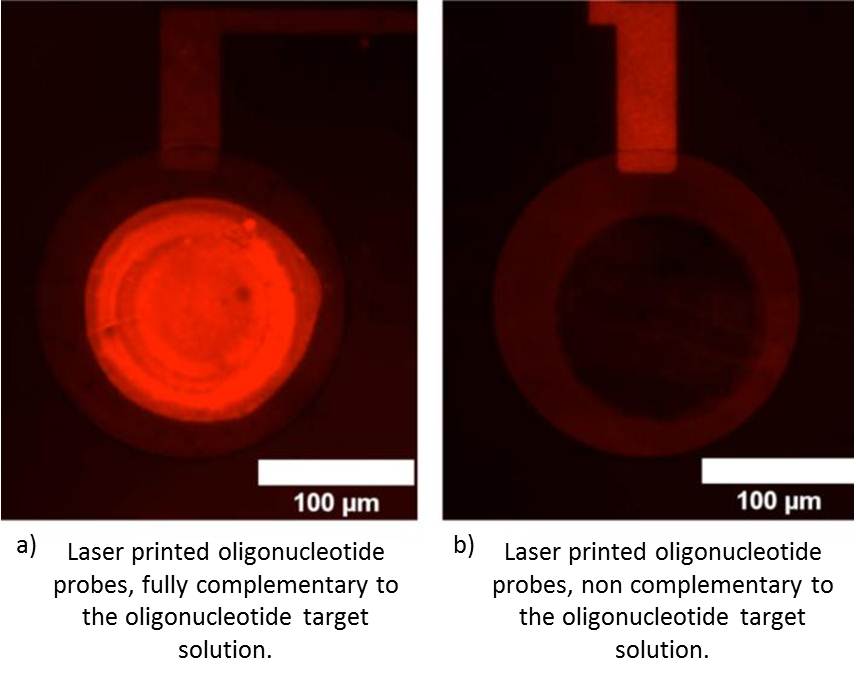
Laser printing of DNA and protein microarrays The transfer of biomaterials, such as proteins, nucleic acids and oligonecleotides has a crucial role in the development of microarrays, biosensors, medical sensors and lab-on-chip devices. The printing of microarrays by liquid phase LIFT offers high spatial resolution, contact less approach and minimization of the biological material waste.


